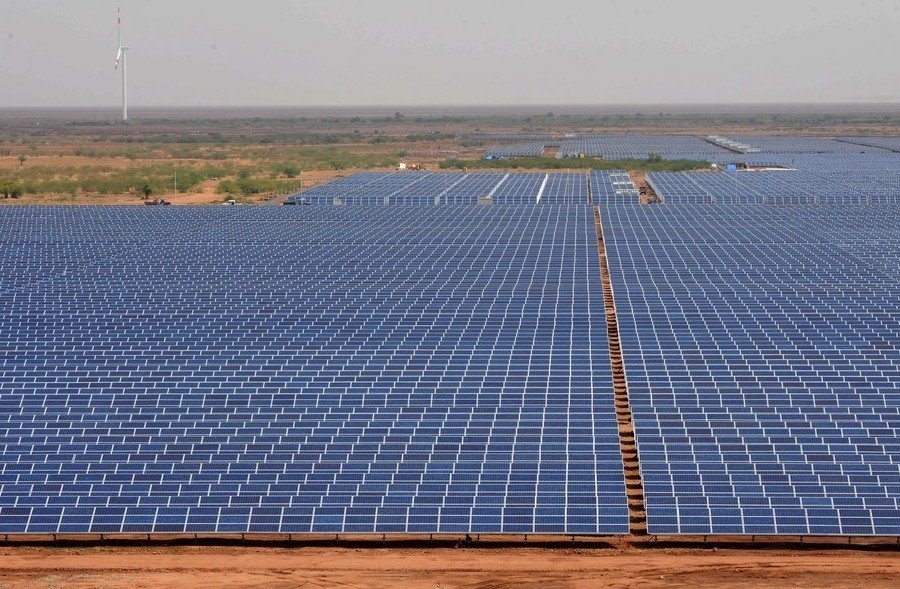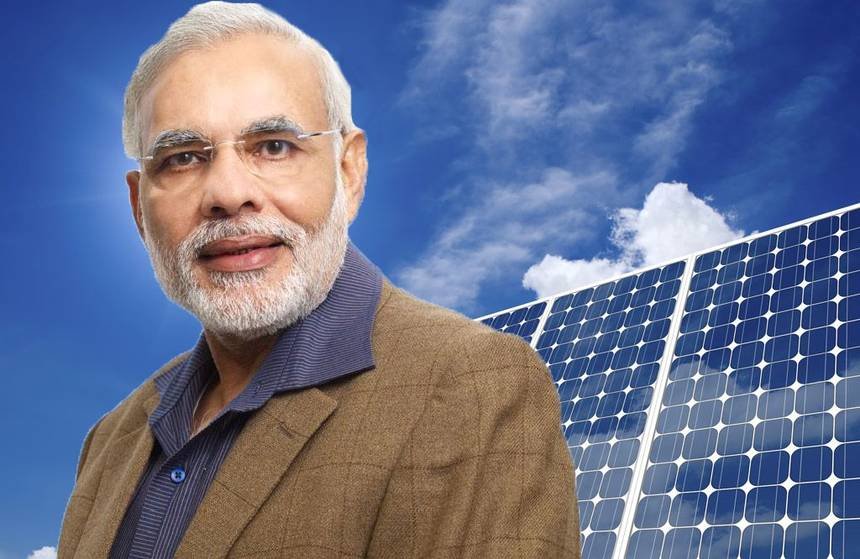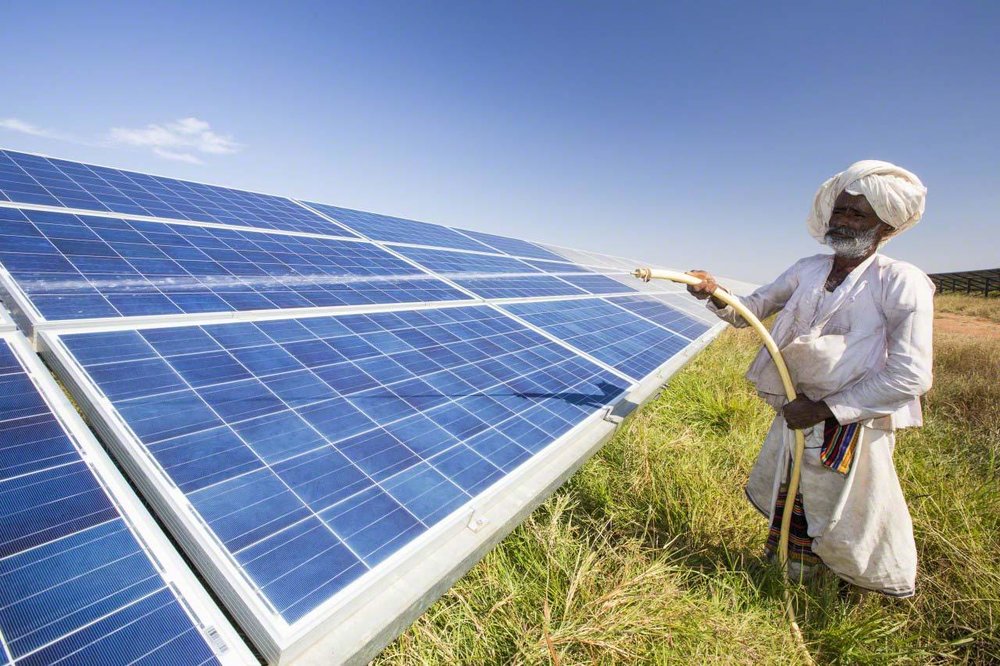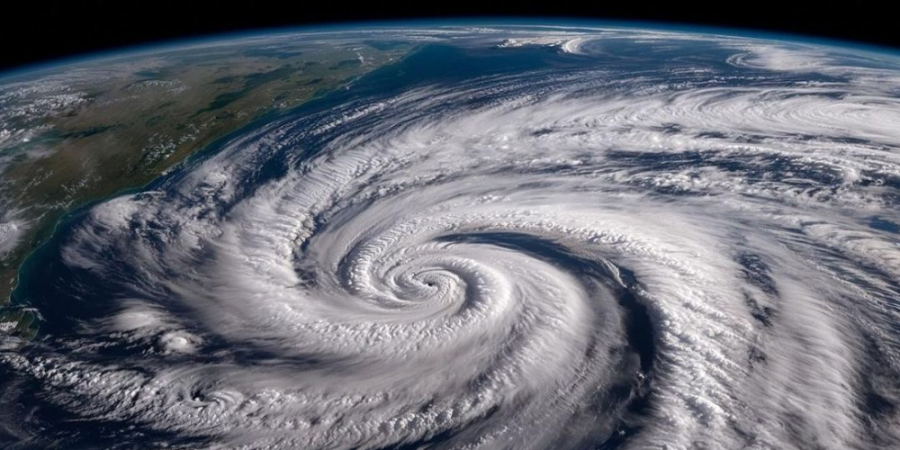As Donald Trump backs out of Paris agreement on fighting global warming, other countries like China and India are quickly picking up the baton for environmental preservation. Recently, India’s prime minister Narendra Modi declared his plans of building the world’s biggest solar park on Indian soils which will have the solar capacity of producing energy equivalent to the total output of Spain.

Pavagada, world’s largest solar farm under construction
India’s Fight Against Global Warming
On a clear March afternoon, the temperatures in this flat, barren land, soar higher than 90 degrees Fahrenheit. The cloud-less horizon over the land stretches infinitely as the weather becomes bearable for even birds to fly in the sky. Here in the lifeless desert of southern India, millions of silver solar panels glimmer under the unforgiving sun; this is the beginning of what’s to become the biggest solar energy park in the world, called Pavagada.
According to reports, the semi-constructed park is expected to generate over 2,000 megawatts of energy once completed. This amount should be able to power 700,000 households with green energy by 2022.
After lagging in the fight against climate change, India has finally decided to play its part in preserving the environment by fueling the global revolution in the field of renewable energy. Through its latest solar project, the country hopes to decrease its dependency on coal and fossil fuels which are considered one of the leading causes of global warming.
Meanwhile, Trump has actively refused to partake in any climate change prevention efforts and is pledging to revive America’s coal industry to fuel the country’s economy.

Prime Minister Modi vows to raise $1 trillion for green energy project in 141 countries
The Future of Energy is Green
At a conference of International Solar Alliance, an organization founded by Modi, the Indian prime minister announced his mission to raise $1 trillion to generate solar energy in 121 countries. The inexpensive solar panels and government incentives have made India the third-largest market for renewable energy after U.S. and China – last year, the country even surpassed Japan in its efforts to move towards solar power for generating green electricity.
The solar project in India doesn’t come as a surprise for a country whose economy is increasing at an annual rate of 7 per cent, but hundreds of millions of residents still don’t have electricity in their homes. In order to meet the growing needs, the government must find cheaper and environmentally ethical ways of producing energy.
Old power plants using coal and other natural gases still account for 58 per cent of the country’s total energy production, whereas wind and solar provide only 15 per cent. By December, the completion of India’s 20-gigawatt solar farm will double the solar energy production capacity compared to a year ago.

Asia’s largest solar power station in Gujarat, India
Building the Biggest Solar Plant
U.S was once home to the world’s biggest solar farm in California called Solar Star which was capable of producing 579 megawatts of solar energy. The prestigious title was soon taken away by China which built a number of solar farms, becoming the number one manufacturer of photovoltaic solar panels in the world.
Now India is racing to build the biggest solar park which is expected to be 14 times as large as Solar Star. To fulfill the mission, Modi is planning to use the barren land in India’s southern and northern desserts which get up to 300 days of sunshine in a year.
Experts say that India has a huge potential of developing solar energy thanks to the availability of land in the form of vast desserts and consistent sunshine which are ideal conditions for building solar farms. These barren deserts have seen very little rainfall in the past few decades and nothing can be grown here except ground nuts. Villagers living in tin-foil huts have also long migrated to Bangalore, a city three hours away from the deserted land which is quickly becoming hub of the country’s IT sector.
The initial phase of the $2-billion solar energy project involving the installation of 1 million panels manufactured in Malaysia has been completed successfully but more work needs to be done before the plant is able to produce the 2000 megawatts of energy promised by Modi.










